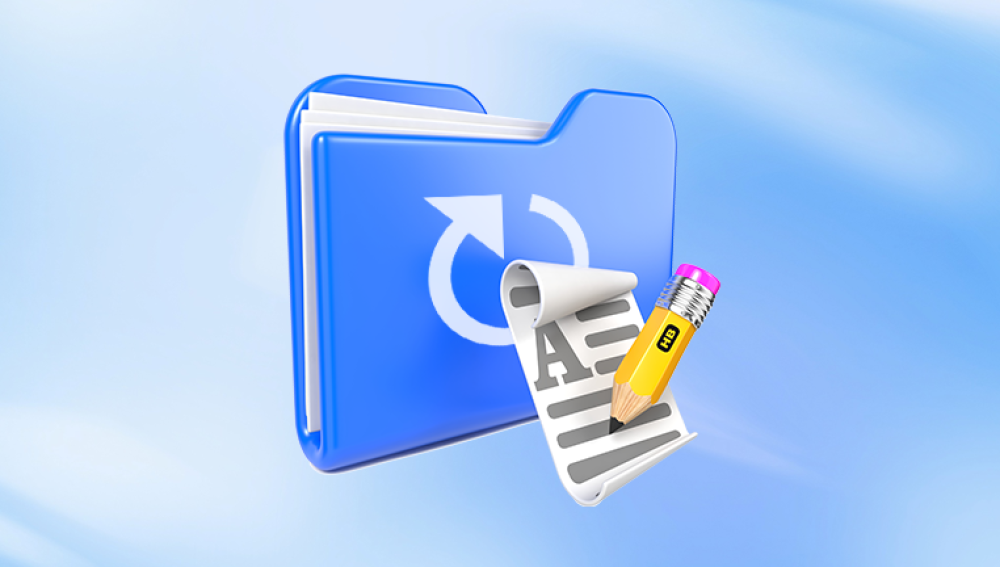In our increasingly digital world, files are the building blocks of daily life. We create, store, and rely on them for work, school, communication, creativity, and entertainment. Whether it’s a crucial Word document, cherished family photos, an important project presentation, or raw video footage, our data often holds irreplaceable value. That’s why losing files can be such a stressful and sometimes devastating experience.
You might have accidentally pressed the wrong button, emptied the Recycle Bin too quickly, or encountered a sudden system crash that wiped out your progress. Maybe an external drive malfunctioned, or malware tampered with your storage. In any case, deleted files can feel like they’ve disappeared forever.
The good news is that in many cases, deleted does not mean destroyed. When files are deleted, they usually aren’t immediately erased from the storage device. Instead, the system marks the space as “available,” meaning the files remain recoverable until overwritten. Acting quickly, using the right tools, and understanding how file storage works can make the difference between permanent loss and successful recovery.

When you delete a file in an operating system such as Windows or macOS:
The file is not immediately erased. Instead, the operating system removes the file’s entry from the file directory, making it invisible to you.
The storage space is marked as available. The data itself still exists on the disk, but the system treats it as empty space.
New data can overwrite it. If you continue using the disk—saving new files, downloading content, or installing updates—your deleted files may be partially or completely overwritten, reducing recovery chances.
This is why speed is critical in data recovery. The sooner you attempt restoration, the higher the likelihood of success.
Step 1: Check the Recycle Bin or Trash
The first and simplest method to restore deleted files is to check the Recycle Bin (Windows) or Trash (macOS). These features act as temporary holding areas for deleted items.
On Windows:
Double-click the Recycle Bin icon on the desktop.
Browse or search for your deleted file.
Right-click the file and select Restore.
The file will return to its original folder.
On macOS:
Open the Trash from the dock.
Find the deleted file.
Right-click and choose Put Back to restore it to its original location.
If you find your file here, recovery is almost instantaneous. But if you emptied the bin or used Shift+Delete on Windows, you’ll need other methods.
Step 2: Use File History or Time Machine
Both Windows and macOS include built-in backup tools that can restore files to earlier versions.
Windows File History:
Go to the folder where the deleted file was stored.
Right-click the folder and select Restore previous versions.
Browse through available versions and restore the one containing your deleted file.
macOS Time Machine:
Connect your Time Machine backup drive.
Open the folder where the deleted file used to be.
Launch Time Machine from the menu bar.
Navigate through backups and restore the file.
These methods only work if File History or Time Machine was enabled before deletion.
Step 3: Use Built-in Restore Options
Previous Versions in Windows
In addition to File History, Windows sometimes creates automatic restore points. If enabled:
Navigate to the file’s folder, right-click, and select Restore previous versions.
Choose from available restore points and recover the deleted file.
OneDrive, iCloud, Google Drive, Dropbox
If you save files to a cloud service, check its Trash/Recycle Bin. Most cloud platforms store deleted files for 30 days or longer.
Sign into your account.
Look in the Deleted/Trash section.
Restore the file directly back to your cloud storage.
Cloud backups can often rescue files you thought were permanently lost.
Step 4: Recover from Windows Backup or System Restore
If you set up backups in Windows via the Control Panel:
Open Control Panel > System and Security > Backup and Restore (Windows 7).
Choose Restore my files.
Browse for your missing file and recover it.
Alternatively, restoring from a System Restore Point may revert your system to a state where the file still existed. Keep in mind this may affect programs installed after that restore point.
Step 5: Use Data Recovery Software
Drecov Data Recovery
When files are deleted, they are not immediately erased from your storage device. Instead, the operating system marks their space as available for new data, which means recovery is possible as long as the deleted files haven’t been overwritten. Drecov Data Recovery is designed to take advantage of this, scanning your disk deeply to locate traces of deleted files and making them recoverable in just a few steps.
To restore deleted files with Drecov Data Recovery, begin by downloading and installing the program on a drive separate from the one where your files were lost. After launching the software, select the affected drive and start a scan. The tool will provide you with a list of recoverable files, allowing you to preview their contents before restoration. Once you’ve identified the files you need, simply choose a safe location preferably a different drive for saving them.
Drecov Data Recovery’s streamlined design makes the process accessible even for beginners. Whether you lost files due to accidental deletion, formatting, or system crashes, it offers a safe and efficient way to get them back. By acting quickly and using Drecov Data Recovery, you can recover your important data without unnecessary stress.
Step 6: External Drives and USB Recovery
Deleted files from USB flash drives, SD cards, or external hard drives can also be recovered.
Connect the device to your computer.
Run recovery software to scan it.
Restore files just as you would from an internal drive.
This is particularly useful for recovering photos or videos from cameras, drones, or portable storage.
Step 7: Professional Data Recovery Services
If recovery software doesn’t work—perhaps due to physical damage, severe corruption, or overwritten data—professional services may be your last option.
Data recovery labs use advanced tools in cleanroom environments to extract data from damaged drives. Though expensive, they can often recover critical files that software cannot.
Scenarios that may require professional help:
Clicking or grinding noises from a hard drive.
Completely inaccessible drives.
Physically broken USB sticks or SD cards.
Preventing Future File Deletions
Once you’ve restored your deleted files, it’s important to protect your data going forward.
Best Practices:
Enable automatic backups. Use File History, Time Machine, or third-party tools.
Store copies in the cloud. Services like OneDrive, Google Drive, and Dropbox provide redundancy.
Adopt the 3-2-1 backup rule. Keep three copies of data: two local (different devices) and one offsite.
Organize files. Keep everything in structured folders to avoid accidental deletion.
Double-check before deleting. Pause before emptying the Recycle Bin or Trash.
Partition drives. Keep operating system files separate from personal files to reduce risk.
With these practices, you’ll minimize the risk of accidental deletions in the future.
Common Mistakes to Avoid During Recovery
Continuing to use the affected drive. This risks overwriting recoverable files.
Installing recovery software on the same drive. Always use a different drive.
Ignoring previews. Restoring corrupt files is useless if they can’t be opened.
Failing to back up recovered files. Always save copies elsewhere.
Real-World Examples
Accidental Work Document Deletion
A student deletes a term paper by mistake. By checking the Recycle Bin, they restore it instantly within seconds.
Photos Lost from an SD Card
A photographer formats an SD card before transferring images. Using data recovery software, most photos are restored successfully.
Business Files Deleted in a Crash
A small business suffers a crash that deletes files. With a professional data recovery service, they retrieve vital financial documents.
These scenarios show that deleted files can almost always be retrieved if you act quickly and follow the right steps.
Restoring deleted files may seem daunting at first, but with the right methods, recovery is often possible. Start with simple solutions like the Recycle Bin or Trash, then move on to built-in backups such as File History, Time Machine, or cloud services. If those fail, data recovery software provides a powerful way to retrieve files. In extreme cases, professional recovery services can help.
The key is speed: the sooner you attempt recovery, the greater the chance of success. And once you’ve restored your files, invest in proper backup strategies to ensure you never face the same stress again.




